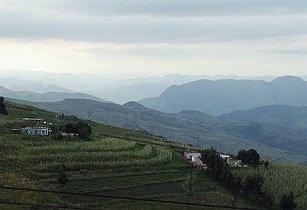The latest rankings in the 2017 Index of Economic Freedom by The Heritage Foundation shows people living in countries with low trade barriers are better off
Swaziland ranked top of all African countries as having the highest level of free trade, according to the 2017 Index of Economic Freedom.
The country, known as one of the world’s last remaining absolute monarchies, scored 88.9, followed closely by Mauritius with 88.7. Swaziland’s economy is closely linked to the South African economy from which it receives more than 90 per cent of its imports and to which it sends 60 per cent of its exports: sugar, wood pulp, cotton, beef and soft drink concentrates.
Sudan, which is due to have its economic and financial sanctions lifted in July, had the lowest global trade freedom score of 50.5, while Hong Kong, Liechtenstein, Macao, Singapore and Switzerland scored the highest in the world with 90.
The trade freedom scores were released by The Heritage Foundation and are based on two variables: trade-weighted average tariff rates and non-tariff barriers (NTBs), from the World Bank’s most recent data. The weighted average tariff uses weights for each tariff based on the share of imports for each good. Different imports often face different tariffs.
The report stated, unlike inflation data, some countries do not report their weighted average tariff rate every year. Therefore, countries like North Korea and Somalia were not graded. The 2017 index, which was based on data from the second half of 2015 until the end of June 2016, demonstrated the important link between trade freedom and prosperity and well-being. It indicated those countries with the most trade freedom have higher per capita incomes, lower rates of hunger in their populations, and cleaner environments.
According to the report, since the Second World War government barriers to global trade have reduced significantly. Today, the average world tariff rate being less than three per cent. Countries with low tariffs and few non-tariff barriers promote stronger growth and encourage freedom in general – including the protection of private property rights and allowing people to buy what they want, it added.
“The 2017 Index of Economic Freedom shows people who live in countries with low trade barriers are better off than those who live in countries with high trade barriers. Reducing those barriers remains a proven recipe for prosperity.
Governments interested in higher economic growth, less hunger, and better environmental quality should promote freedom, not pander to special interests who want to restrict it,” it concluded.
The findings come as current trade policies are being questioned in the USA – where the average tariff rate is just 1.4 per cent but pickup trucks face 25 per cent tariff – and around the world as the volume of world trade is stagnating.
In the report, WTO director general Roberto Azevedo is quoted as saying, “Out of the more than 2,800 trade-restrictive measures recorded...since October 2008, only 25 per cent have been removed. In the current environment, a rise in trade restrictions is the last things the global economy needs.”





















